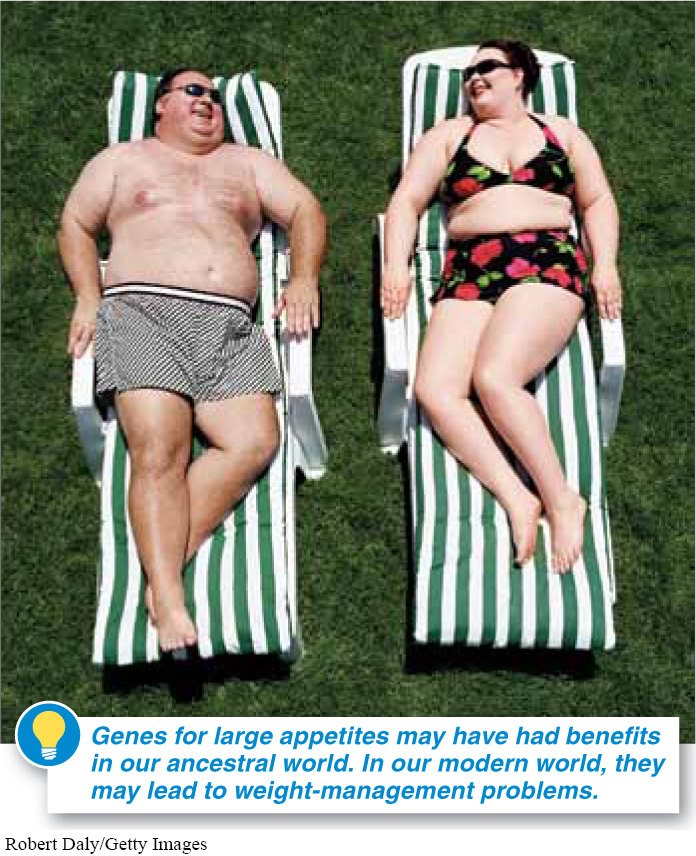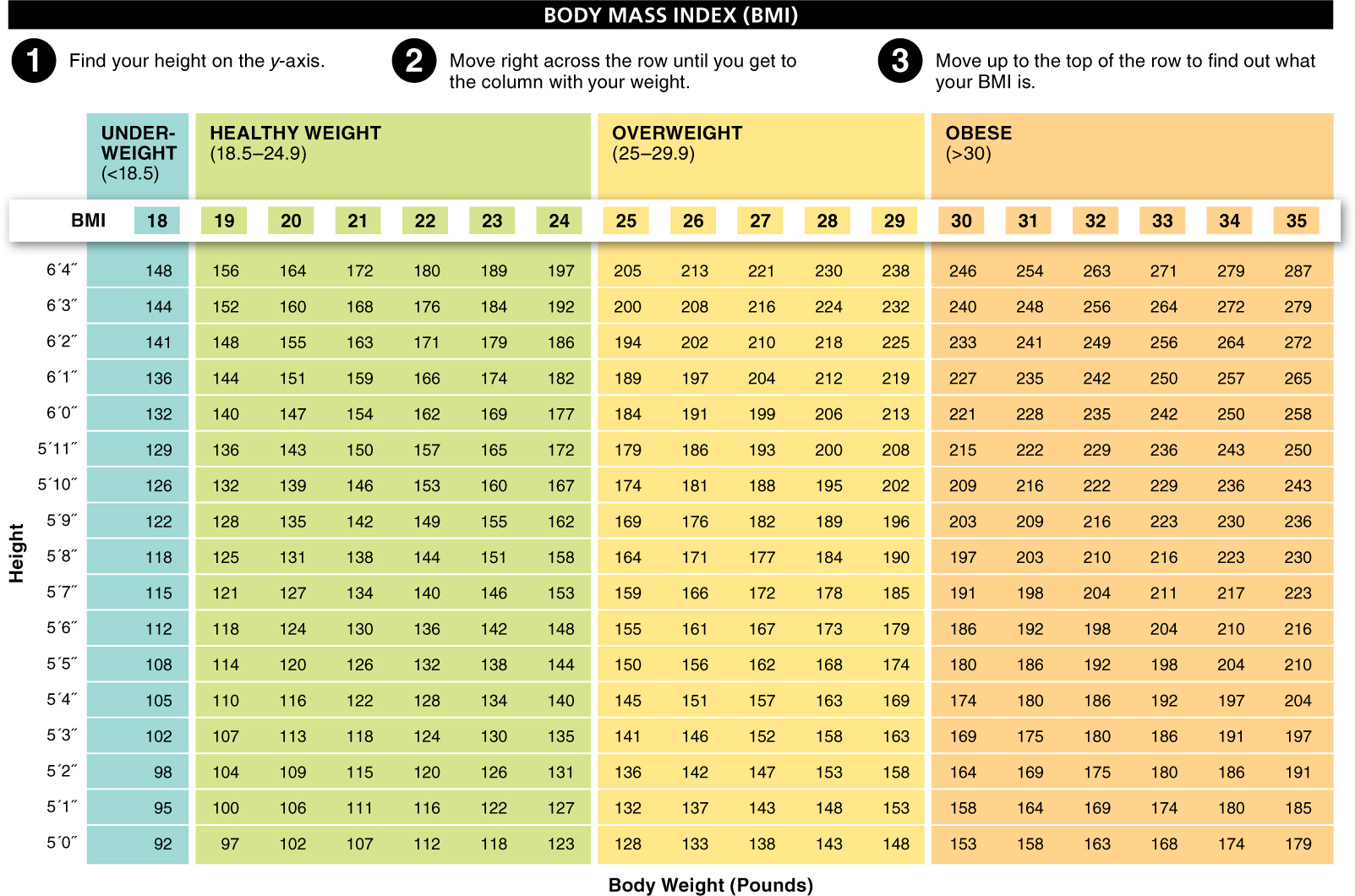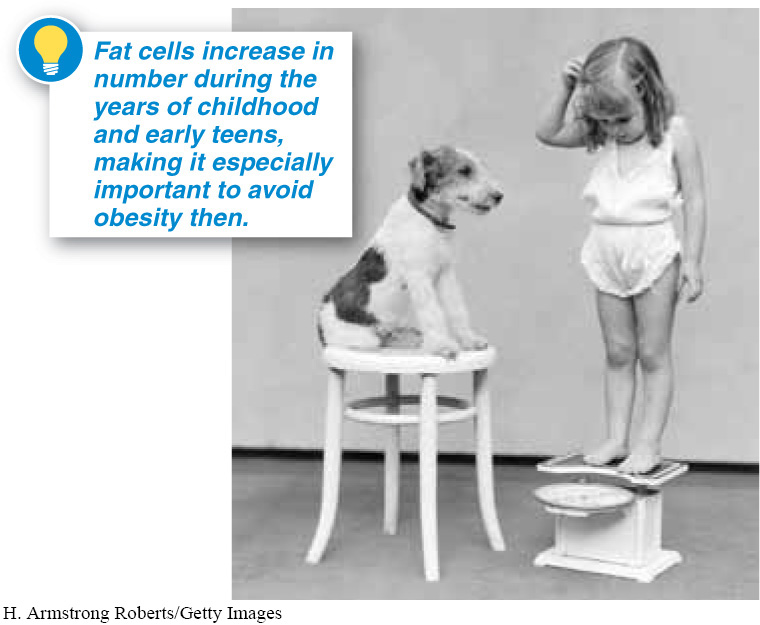Jerry and Louis Kahn are two brothers who really love to eat. The pair tip the scales at about 500 pounds each—
Like the Kahns, we all have inherited genes from our parents that significantly influence our body weights. All humans inherit dozens (possibly hundreds) of genes that influence body weight, and even in their “normal” condition, these genes are likely to lead to weight problems (FIGURE 22-30). But this raises a couple of questions. Why would it be in our genetic interests to have huge appetites? Why would natural selection favor such genes? To answer these questions, we must consider the harsher, less predictable environment in which Homo sapiens evolved.

Our ancestors lived off the land by hunting animals and gathering plants. Under such conditions, it was unclear where the next meal was coming from. Powerful, instinctual hunger kept our ancestors going in that tough, energetically demanding world. Those individuals who were enthusiastic rather than restrained eaters were most likely to survive periods of food shortage and live to reproduce. Recent studies using PET scans (positron emission tomography, a type of imaging) have supported this, demonstrating that just the sight of food sets off activity in the brain’s pleasure centers—
The consequence of our perpetual hunger is not news: one of every four Americans is obese. In terms of size, plumpness gets labeled “obesity” when our body mass index hits 30. Body mass index, or BMI, equals body weight in kilograms divided by height in meters squared (kg/m2). A BMI of 30 translates to about 209 pounds if you are 5 feet 10 inches tall, and 180 pounds if you are 5 feet 5 inches. With a BMI of 25 or higher but under 30, you are considered only “overweight.” BMI isn’t the only way to evaluate obesity, and it has some important problems as a measure of body fat. Because the measure does not consider body composition, professional athletes and bodybuilders with unusually large muscle mass, for example, may have BMIs that fall within the obese range. Still, it is a useful and easily obtained measure (FIGURE 22-31). Repeatedly, around the world, as societies get richer and as individuals age, they tend to become fatter. Most of us would reduce our risk of heart disease, stroke, and diabetes if we lost even as little as 10 pounds. But because of the “famine-


From the cellular perspective, the specific causes of obesity are an increase in the size and number of the fat cells an individual carries. Excess calories can be converted to fat regardless of whether they come from fats, carbohydrates, or proteins. Whatever the source, the fat molecules are added to the fat cells in the body’s adipose tissue. Fat cells increase in number primarily during the late years of childhood and in the early teens (FIGURE 22-32). After that, the cells tend to grow in size rather than number with excess caloric intake, although when a fat cell becomes too large it will divide. The reverse, unfortunately, is not true. When people lose weight, their fat cells become smaller but are never lost completely. Consequently, it is especially important to avoid obesity early in life.
903
The problems of obesity are not restricted to humans. Most primates in zoos are also overweight, as are many pets and most laboratory research animals. In each case, the reason is the same as for humans. In their natural world, food is limited and unpredictable. Animals overeat when they do not need to expend much energy to acquire food and food is plentiful. In the next section, we explore some weight-
TAKE-HOME MESSAGE 22.16
Food supplies were unpredictable for our early ancestors, leading to the evolution of strong appetites. In the modern industrial world, such instincts have problematic consequences, leading most people to overeat and to weigh more than they would prefer and more than is healthy. Zoo animals, laboratory animals, and domesticated animals have a similar problem.
Why is body mass index (BMI) a useful measure? What is a shortcoming of BMI?
BMI is useful because it provides a measure of the ratio between height and body weight, allowing one to evaluate obesity. It does not, however, take body composition into account. Therefore, professional athletes and bodybuilders with large muscle mass may have BMIs that fall within the obese range.
904